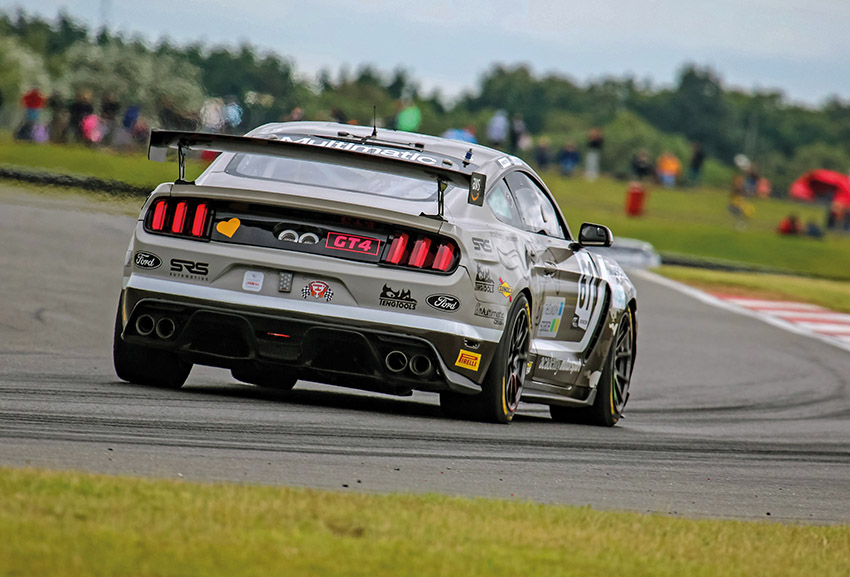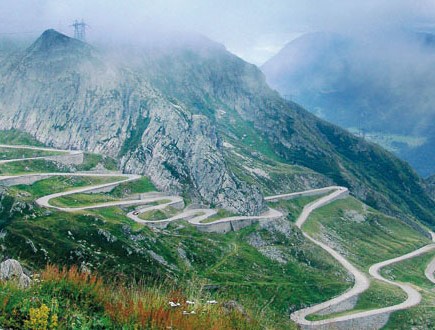We guide you around one of the most comprehensive tracks the UK has to offer, Snetterton 300.
Guide from Fast Ford magazine. Words: Alex Nevill & Jamie. Photos: Fast Ford Archives.
Snetterton is one of the best tracks to test at in the UK. It has a bit of everything: fast corners and slow corners, long turns and short turns, big straights and small ones. Every part of a car is tested at Snetterton. It might not offer the same thrills as somewhere like Brands Hatch or Oulton Park, but it’s still a big challenge to nail a lap here.
Check out all our track guides here
Snetterton 300
1 – Riches
After dashing up the Senna straight from the start line or pit lane exit, the first of the 12 corners on the new Snetterton ‘300’ layout is Riches, a fast double-apex right-hander. It’s a corner where you’ll need to build up your confidence and speed with each lap.
Usually, on a track day there’ll be boards to your left that’ll count down the distance to the corner, so you can use these as reference points for your braking.
Depending on your confidence and the handling of your car it’ll be a reasonably light amount of braking for the corner.
The first apex is the most important; aim for the tightest part of the kerb on the inside (but don’t necessarily hit it) and you want to start feeding in the throttle as soon as you know you’re going to make the apex.
From there let the car run out slightly, before cutting back in for the second apex where the inside kerb widens. By that point, you should be flat on the throttle.
The car will run out to the left of the circuit on the exit, which is exactly where you want it to go. Just make sure it doesn’t run too wide, as the grass has a habit of spinning cars into the Armco on the inside.
2 – Montreal
From the exit of Riches, it’s a short burst down to the Wilson hairpin (also called Montreal, as the corner’s modelled after the hairpin at the Montreal Formula One circuit).
You can use the marker boards to your left as a reference; you want to be hard and late on the brakes, but not too late as any issues making the apex of the corner will ruin your exit speed.
Gently turn into the corner, trying to roll as much speed as you can into the apex, about three-quarters of the way around the turn. From here, it’s hard on the throttle and out to the left of the circuit on the exit, before moving back over to the right for Palmer.
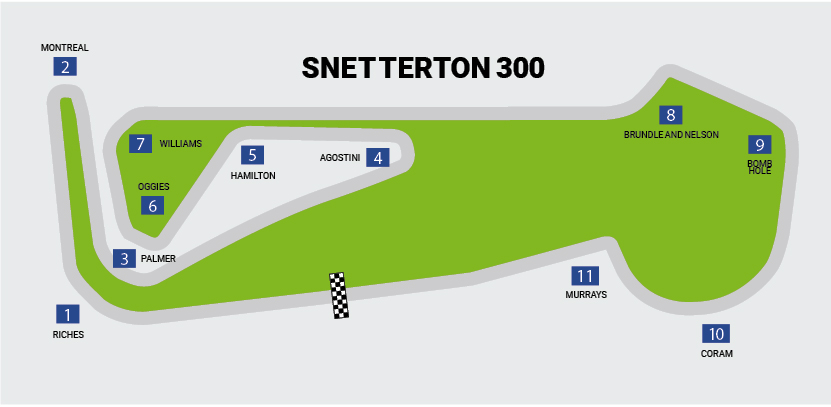
3 – Palmer
Palmer needs a similar technique to Riches, although it’s a slightly different corner. It’s roughly the same length but there’s only one apex and it’s a slower approach.
Brush the brakes before turning to slow the car, and then aim for the start of the kerb as your apex and hug it for most of the corner. If you’re finding that you’re struggling with understeer on the exit you can try a slightly later apex for a straighter exit, but bear in mind that your mid-corner speed will be slower as a result.
4 – Agostini
Agostini is the next corner, which is a horribly awkward hairpin. Whatever you do through here it’ll always feel quite under-whelming and slow, so it’s important to stay disciplined and don’t let yourself overdrive the corner.
Use the marker boards on your right as your reference for braking, and from there aim for about halfway around the inside kerb for the apex. This line offers the best compromise between getting the power down on the exit and the shortest line/highest minimum speed on the entry and apex of the corner.
The key with this turn isn’t to try to find time, it’s about trying not to lose time.
5 – Hamilton
The Snetterton circuit starts to get fun again with Hamilton, a short and fast left-hander that demands commitment from the driver. There is usually a tyre bundle by the apex to stop you cutting the corner, and you want to aim for that, but you definitely don’t want to hit it.
This is one of the corners where you need to be committing to the throttle early; as soon as you can tell the car will make the apex, you need to be back on the throttle for a fast and stable run through the corner.
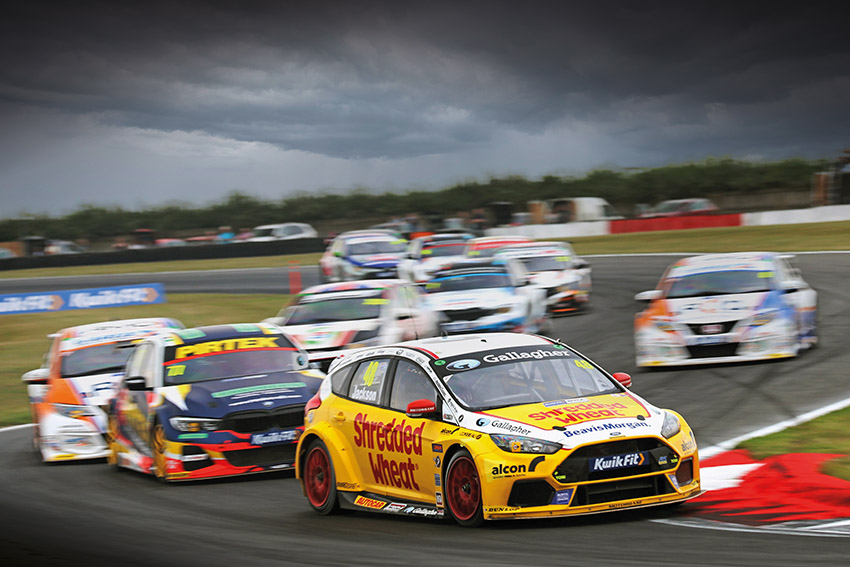
6 – Oggies
Oggies is the only corner you can really attack. You’ll want to position the car on the left-hand side of the circuit quickly, which isn’t easy as the car will be fully over to the right after going through Hamilton.
From this point there are usually boards indicating the corner either side of the circuit, which you can use as a braking reference. You can carry a fair amount of corner speed into the turn, as it’s quite a short corner.
Use as much of the inside kerb as you can here to hook the car in tight, and don’t let it run out to the exit fully until after the slight kink in the road.
7 – Williams
Williams follows almost immediately afterwards. It leads onto the long Bentley straight, so it’s important to keep your momentum up through the corner and get a strong exit.
Dab the brakes before you turn and aim for the start of the inside kerb as your apex. From there hold the car in tight until you reach the tyre bundle on the inside, by which point you want to be letting the car run out to the left. You’ll know you’ve got the corner right when your left-hand wheels are kissing the exit kerb.
7 – Brundle & Nelson
After taking a well-earned rest down the Bentley straight it’s time for one of the trickiest sections of the circuit, starting with the Brundle and Nelson complex. The key with this section is to prioritise the exit of Nelson, as that’s where time can be found.
On approach you can use the boards on your right and the bridge as reference points for your braking; you’ll want a late apex right towards the end of the corner at Brundle so that you can keep the car fully to the left for your approach to Nelson.
You’ll need to use some throttle through Brundle to keep your minimum speed up, but honestly it doesn’t matter how much throttle you use at this point. The harder you are on the throttle here the more you’ll need to slow down for Nelson, and whatever you do through Brundle just make sure you don’t do anything that’ll compromise your approach to Nelson.
Between the two corners is an extremely short straight, at a guess probably 20 to 30 metres, so it’s very difficult to coordinate your entry to the corner. Once that’s done your apex is the corner of the inside kerb (Nelson is a 90-degree turn) and from there you need to be accelerating hard up to the Bomb Hole.
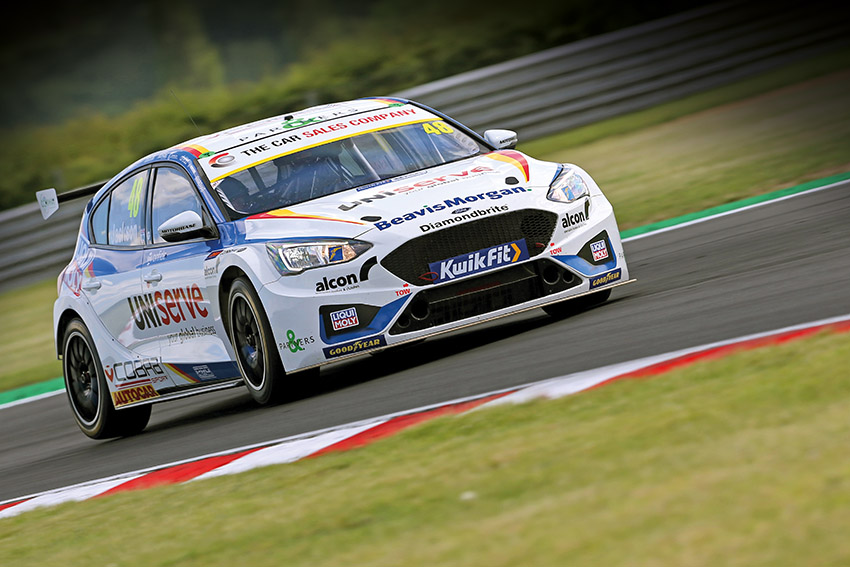
8 – Bomb Hole
The Bomb Hole is flat for most race cars but in road cars with less grip you’ll probably want to dab the brakes before turning in. For the most part it’s an acceleration zone, so the key is to make sure that you aren’t having to fight the car through the corner. There aren’t really any visual markers around this corner, but you’ll develop a feel and a rhythm for the corner after a few laps.
9 – Coram
The penultimate corner of Snetterton 300 is Coram. The two most important things here are your vision and your sense of balance with the car. You need to be looking long around the corner to find your apex, which is about halfway around where there’s an access road on the inside and a painted kerb: you want a wide, arching line into it as hugging the inside of the corner throughout the turn will be too tight. It’ll slow the car and make the corner even tougher for you.
Your balance with the car will be crucial. The length of the turn means it won’t be flat, so there will be points where you’ll need to lift off the throttle slightly, but too sharp a lift will cause lift-off oversteer.
You’ll also be constantly making small adjustments on the steering wheel, and if they aren’t small enough, you’ll upset the balance of the car that way too.
10 – Murrays
Finally, the braking zone for Murrays starts towards the end of Coram, so you’re still turning when you hit the brakes. With that in mind you need to be softer on the brakes than usual, but still hard enough to get the car slowed down properly for the 90-degree left turn.
Visually there are usually some orange floppy markers to the driver’s right that provide reference points for your braking, but you can’t depend on them; the nature of this braking zone means they can often be wiped out by your fellow drivers.
Once you’ve got the car slowed down, the apex/exit of the corner is identical to the technique needed at Nelson. When you’re out of the corner, keep to the right of the circuit for the shortest run to the finish line, especially if on a qualifying or timed lap. If not, ease the car over to the left as you head up Senna Straight; you want to be on the left side of the track ready for the right-hander at Riches, but it pays to get over to the left before the pit-lane exit emerges, so any cars venturing onto the track don’t disrupt your rhythm.
And that’s a lap of the Snetterton 300 circuit completed.

